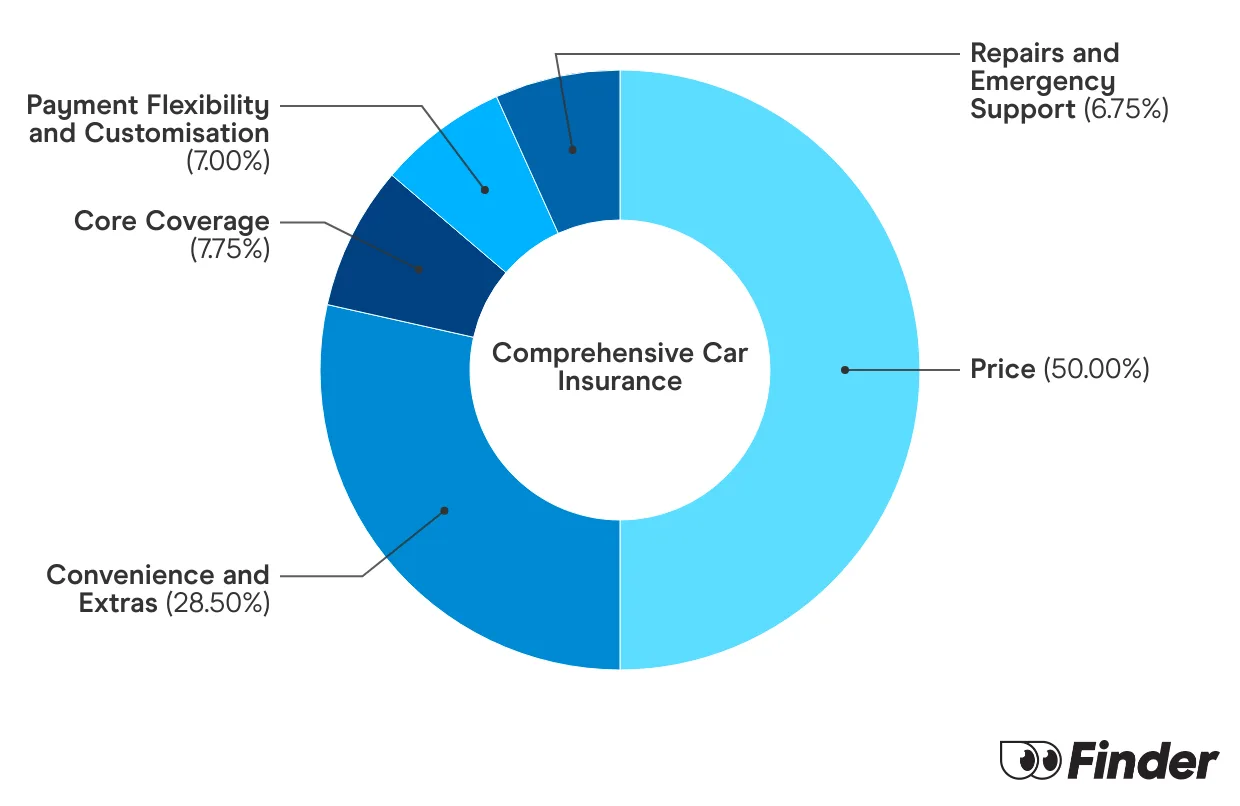Key takeaways
- Your ability to find car insurance as a high risk driver depends on the offence, how long it’s been and the insurer’s criteria.
- We found 3 providers who said they may provide cover for those who have had a licence suspension.
- We found 11 providers who said they may provide cover for those with an at-fault accident claim.
What makes a driver considered ‘high risk’?
Largely, people are considered high risk drivers because they’ve:
- Got prior claims for an at-fault accident
- Got multiple fines for things like speeding or other forms of dangerous driving
- Been convicted of driving under the influence of alcohol or drugs (DUI)
- Had their licence suspended
- Have a criminal record for something unrelated to driving, like fraud or arson
- Done nothing wrong, they’re just younger drivers — typically under the age of 25
- Done nothing wrong again, they just drive longer distances per year and therefore are on the road more often, increasing their exposure to accidents
Can I get car insurance if I’m a high risk driver?
Most likely but it’ll depend on why you’ve been deemed a ‘high risk’ driver and how long ago any offences occurred.
In some cases, the insurer will decide you’re risky and up your premium. This is particularly true in the case of younger drivers, high mileage drivers, those with prior at-fault claims, and those with speeding fines.
In other, more serious cases, they'll decide you’re too risky and refuse to cover you. This is particularly true for those with DUIs, licence suspensions and criminal records. However, not all insurers are created equal and we’ve found a bunch who may cover you for some of these instances.
Car insurance for drivers with a licence suspension
Every month, we source quotes from 11 car insurers in Australia. We answer "yes" when asked if the driver's licence has been "cancelled, suspended or restricted" due to any driving offence(s). Of the 11, we were only able to return quotes for 3 providers.
Keep in mind, whether you'll actually be able to get cover depends on your specific offence, individual circumstances and your risk profile.
| Brand | Annual cost | Apply |
|---|---|---|
| $1,830.26 | More info | |
| $1,774.43 | Get quote |
Prices accurate as of December 2025
Compare these car insurers in more detail
Compare other products
We currently don't have that product, but here are others to consider:
How we picked theseFinder Score for car insurance
We analyse over 30 car insurance products across insurance providers, and rate each one for price and features. We collect up to 36 quotes per product, for male and female drivers in New South Wales, Victoria, Queensland, South Australia, Tasmania and Western Australia. Quotes are collected for 20 year olds, 30 year olds and 60 year olds, assuming an excess of $850 for a 2020 Toyota Corolla 4 door sedan model, with an average 15,000 kms driven each year. We use your responses to our quiz to pair you with the closest price profile and while we are not allowed to display actual quotes, our price score aims to serve as an indicative guide to how cost competitive a product might be for you.
Our feature score assesses each product for more than 15 features across loss and damage coverage, repairs and assistance coverage, personal items coverage and policy coverage. Features we assess include but are not limited to legal liability, essential repairs, new car replacement, car hire events, roadside assistance, agreed or market value, windscreen damage and natural disaster coverage.
Depending on your answers to our car insurance quiz, we upweight the relevant price score or feature score to generate a dynamic Finder Score (80% weighting on the primary selection between Price or Feature). Finder Score, Price Score and Feature Score are only to be used as indicative guides and are not product recommendations.
Case study
Finder survey: How many people have accrued demerit points for a driving offence?
| Response | Male | Female |
|---|---|---|
| Yes | 56.25% | 45.59% |
| No | 41.67% | 53.26% |
| I have never driven before | 2.08% | 1.15% |
Car insurance for drivers with an at-fault accident claim
Every month, we run quotes from 11 popular car insurance providers in Australia to see who might offer cover for drivers with an at-fault accident claim. To get our quotes, we chose “yes” when asked about a past accident claim and selected "at fault".
It’s worth noting, usually, insurers asked about offences in the last 3 or 5 years. So if your at fault claim is beyond then, you won’t need to list it.
The good news is, we were able to return quotes for all 11 providers. The bad news is, it’s a little expensive.
Remember, the below should be used as a guide only. Your own risk profile will differ and your own quotes will reflect your personal circumstances.
| Brand | Annual cost | Apply |
|---|---|---|
| $1,396.36/td> | Get quote | |
 | $1,033.50 | Get quote |
| $1,136.87 | Get quote | |
| $1,942.77 | Get quote | |
| $2,407.00 | Get quote | |
| $2,055.30 | Get quote | |
| $2,541.67 | More info | |
 | $1,062.89 | Get quote |
| $2,160.99 | More info | |
| $1,862.94 | Get quote |
Prices accurate as of December 2025
Compare these car insurers in more detail
Compare other products
We currently don't have that product, but here are others to consider:
How we picked theseGetting cheaper car insurance for high risk drivers
As you’ll — rather painfully — know, getting car insurance when you’re deemed a high risk driver, can be expensive. Fortunately, there are plenty of ways to save that don’t rely on having a squeaky clean driving history. Here’s what you can do:
- Take advantage of sign up discounts. Many insurers offer up to 15% off —sometimes even more — your first year’s premium when you buy online. That’s over $100 in savings for anyone’s quote that lands in the thousands.
- Choose a higher excess. This can lower your premium, but you'll pay more upfront if you make a claim. Read more about car insurance excess.
Restrict who can drive your car. Excluding young drivers, such as those under 25, and naming who else will drive your vehicle are both ways you could reduce costs. - Pay premiums annually. If possible, paying premiums annually can be cheaper than paying monthly or fortnightly.
- Get quotes for both agreed and market value. Insuring your car for market value used to be a good way to lower your premium but as the second hand car market booms, this isn't always the case anymore. Depending on your car, it may be cheaper to insure for an agreed value. Getting a quote for each and weighing up the pros and cons is a good way to know your options and reduce costs.
- Shop around and compare your options. Every insurer is so different and there’s often hundreds of dollars difference in the quotes. Don’t pay more than you need to.
FAQs
Sources
More guides on Finder
-
20 most dangerous LGAs in NSW for drivers
Do you drive in one of the most dangerous areas of NSW?
-
Coles roadside assistance review
Coles roadside assistance – affordable cover with your car insurance. Is it right for you?
-
Allianz vs AAMI car insurance
A side by side comparison of Allianz and AAMI car insurance including expert analysis of pricing, features, complaints and reviews.
-
AAMI vs NRMA Car Insurance
A side by side comparison of AAMI and NRMA car insurance including expert analysis of pricing, features, complaints and reviews.
-
Is it illegal to…? Your driving questions, answered.
Do the police have quotas to meet? Is it legal to eat while driving? Find the answers to these and other driving myths.
-
Compare roadside assistance in NSW
Your guide to getting roadside assistance in NSW.
-
RAC car insurance review
Only available in WA, RAC car insurance offers some strong benefits and its premiums are about average for the state.
-
Can DUI offenders get car insurance?
Your guide to car insurance when you've been convicted of drink driving.
-
Car insurance for under-25s
Discover the steps to get affordable car insurance if you are under 25.
-
Budget Direct car insurance review
Your guide to the car insurance products available from Budget Direct.



